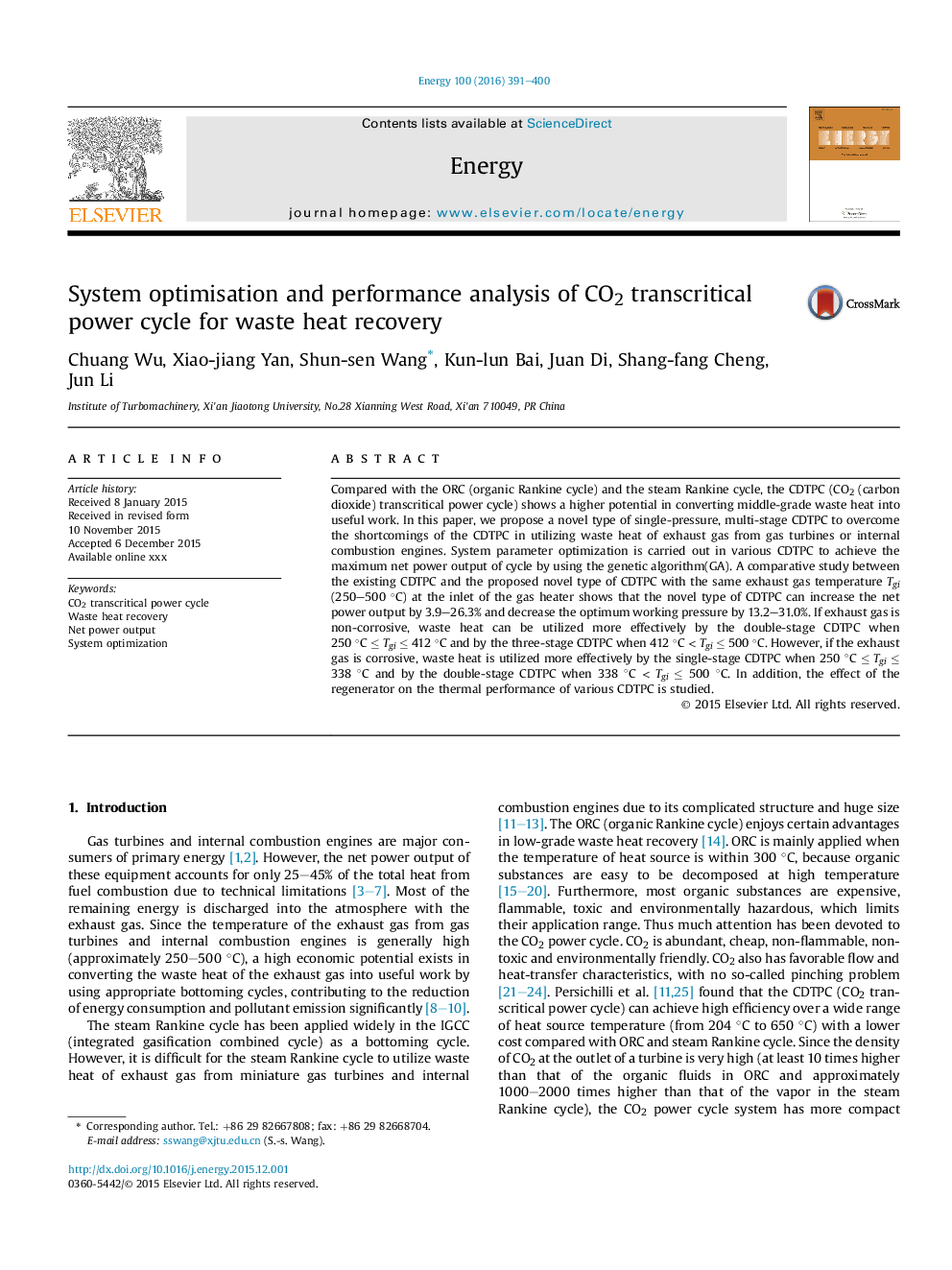| Article ID | Journal | Published Year | Pages | File Type |
|---|---|---|---|---|
| 8074211 | Energy | 2016 | 10 Pages |
Abstract
Compared with the ORC (organic Rankine cycle) and the steam Rankine cycle, the CDTPC (CO2 (carbon dioxide) transcritical power cycle) shows a higher potential in converting middle-grade waste heat into useful work. In this paper, we propose a novel type of single-pressure, multi-stage CDTPC to overcome the shortcomings of the CDTPC in utilizing waste heat of exhaust gas from gas turbines or internal combustion engines. System parameter optimization is carried out in various CDTPC to achieve the maximum net power output of cycle by using the genetic algorithm(GA). A comparative study between the existing CDTPC and the proposed novel type of CDTPC with the same exhaust gas temperature Tgi (250-500 °C) at the inlet of the gas heater shows that the novel type of CDTPC can increase the net power output by 3.9-26.3% and decrease the optimum working pressure by 13.2-31.0%. If exhaust gas is non-corrosive, waste heat can be utilized more effectively by the double-stage CDTPC when 250 °C â¤Â Tgi ⤠412 °C and by the three-stage CDTPC when 412 °C < Tgi ⤠500 °C. However, if the exhaust gas is corrosive, waste heat is utilized more effectively by the single-stage CDTPC when 250 °C â¤Â Tgi ⤠338 °C and by the double-stage CDTPC when 338 °C < Tgi ⤠500 °C. In addition, the effect of the regenerator on the thermal performance of various CDTPC is studied.
Related Topics
Physical Sciences and Engineering
Energy
Energy (General)
Authors
Chuang Wu, Xiao-jiang Yan, Shun-sen Wang, Kun-lun Bai, Juan Di, Shang-fang Cheng, Jun Li,
